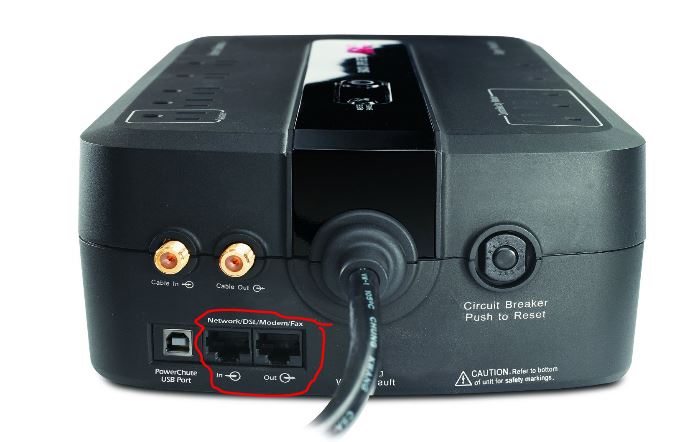Surge protection for DSL and dialup service.
Surge protection takes on many forms, but always involves the following components: Grounding bonding and surge protectors. ...
Grounding is required to provide the surge protector with a path to dump the excess energy to earth. A proper ground system is a mandatory requirement of surge protection. Without a proper ground, a surge protector has no way to disburse the excess energy and will fail to protect downstream equipment.
Bonding is required to electrically connect together the various grounds of the services entering the premises. Without bonding, a surge may still enter a premise after firing over a surge protector, which will attempt to pass the excess energy to its ground with any additional energy that the services surge protector ground cannot instantly handle, traveling into and through protected equipment, damaging that equipment in the process. ...
Now, if all the various service entrance grounds are bonded together there are no additional paths to ground through the premise. Even if all of the grounds cannot instantly absorb the energy, the lack of additional paths to ground through the premise prevents the excess energy from seeking out any additional grounds through that premise and the electronic equipment within. As such, the excess energy remains in the ground system until dissipated, sparing the protected equipment from damage. ...
By far, the whole house hardwired surge protectors provide the best protection. When a whole house primary surge protector is installed at the service entrance, it will provide a solid first line of defense against surges which enter from the power company's service entrance feed. These types of protectors can absorb/pass considerably more energy than any other type of protector, and if one does catastrophically fail, it will not typically be in a living space. ...
Plug in strip protectors are, at best, a compromise. At worst, they may cause more damage than they prevent. While they may do an acceptable job of handling hot to neutral surges, they do a poor job of handling any surge that must be passed to ground. ...
Then, to add insult to injury, some strip protectors add Telco and/or LAN surge protection within the same device, trying to be an all-in-one sale. Remember bonding? When Telco or LAN protection is added to a strip protector, if the premise ground, which is not designed to handle surges, cannot handle all of the energy, guess where that excess energy seeks out the additional grounds? You got it! The Telco and LAN connections now becomes the path, with disastrous results to those devices. ...


 Quote
Quote

